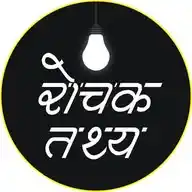UPSC MAINS PYQ UPSC UPSC UPSC UPSC UPSC UPSC Upsc Upsc UPSC UPSC UPSC UPSC UPSC UPSC UPSC UPSC UPSC
7.3K subscribers
About UPSC MAINS PYQ UPSC UPSC UPSC UPSC UPSC UPSC Upsc Upsc UPSC UPSC UPSC UPSC UPSC UPSC UPSC UPSC UPSC
Main channel cse exam https://whatsapp.com/channel/0029Va9AbAbJZg46NAznuX2y *Subject wise channel* Upsc society https://whatsapp.com/channel/0029VaWufLw6BIEknk3zHz2R Internal security https://whatsapp.com/channel/0029VabMGoV7YSczWUxg4d2F Art and culture https://whatsapp.com/channel/0029VaeNm6EEquiVREmJrl0F Mindmap https://whatsapp.com/channel/0029VaazqwV8aKvFQwYJlw02 Ethics https://whatsapp.com/channel/0029VaaWX4aFCCobFmqcRL3q ✅ CSAT https://whatsapp.com/channel/0029Vabv60LLCoWsu9kNQl1I ✅Upsc PIB https://whatsapp.com/channel/0029VaGjIdyChq6H86MD643x ✅Science & technology https://whatsapp.com/channel/0029Va9T3U31Hspr7kNcod0g ✅Environment & ecology https://whatsapp.com/channel/0029VaBiYQY2Jl8LDfC2YZ3j ✅Upsc mains facts https://whatsapp.com/channel/0029VaQy4BBJUM2TXmGueJ2T Mains pyq model answer https://whatsapp.com/channel/0029VajSp953bbV4XmAbtb26 ✅Geography Mapping https://whatsapp.com/channel/0029Va9S9pL0rGiGyEIEUe1b ✅Polity governance https://whatsapp.com/channel/0029VaGDohxKrWQz0GZ5Fa1v ✅Prelims tricks https://whatsapp.com/channel/0029VaEPayu2v1InlnkS6K06 ✅Anmol vachan motivational https://whatsapp.com/channel/0029Va42j79297531AcAOm1X ✅Essay ethics example https://whatsapp.com/channel/0029VaHNc8mDuMRWb1Zybf33 ✅Economy agriculture https://whatsapp.com/channel/0029VaHOmr34inorlsEbVc2X ✅History culture https://whatsapp.com/channel/0029VaLZoxWBfxo4bstnop1k ✅Hindi medium https://whatsapp.com/channel/0029Va4ktYl8V0ttJgAhH70b ✅UPSC PYQS https://whatsapp.com/channel/0029VaH6GnYBvvsX99pHCG1C Upsc IR https://whatsapp.com/channel/0029VaMyvdJJ3jurNz6pne3z Government schemes https://whatsapp.com/channel/0029VaYZ5ls5Ui2c7bNRo62I
Similar Channels
Swipe to see more
Posts
🔆 West Asia holds significant strategic importance for India, both in terms of geo-political and geo-economic factors. Discuss. (200 words) ✅ Introduction • Contextualize the Importance: Briefly introduce West Asia’s strategic significance for India. • Thesis Statement: Highlight that the significance can be explored through geo-political and geo-economic lenses. ✅ Geo-Political Factors • Historical Ties: Mention deep civilizational contacts and cultural exchanges. • Non-Alignment Support: Discuss how West Asia supported India’s non-alignment during the Cold War. • Diplomatic Outreach: Highlight India’s increased engagement and mutual geo-strategic interests. ◦ OIC Membership: India’s invitation to the OIC in 2019, despite Pakistan’s opposition. • Support on Article 370: Mention backing from Saudi Arabia and UAE regarding the abrogation of Article 370. ✅ Geo-Economic Factors • Energy Security: Discuss India’s dependence on crude oil and gas from West Asia. ◦ Engagement with Gulf Economies: Refer to Saudi Arabia’s Vision 2030 and collaborations with ARAMCO and ADNOC. • Indian Diaspora: Highlight the significance of the 9 million-strong Indian diaspora in West Asia. ◦ Remittance Flow: Discuss the economic impact of remittances on India. ✅ Strategic Initiatives • Chabahar Port Project: Explain the strategic importance of the Chabahar port in relation to Iran and Central Asia. • Formation of the ‘New Quad’: Describe the 12U2 grouping and its focus on economic cooperation. ✅ Conclusion • Reiterate Importance: Summarize the strategic significance of West Asia for India. • Address Challenges: Briefly mention conflicts in the region that India must navigate to protect its interests.
Explain the differences between cropping patterns and cropping systems. Additionally, describe the various types of cropping systems followed in India. (Answer in 200 words)pital? Explain the role of human capital in contributing to a country’s economic growth. (Answer in 200 words) 🔆 1. Introduction 📍 Definition of Key Terms: ✅ Cropping Pattern refers to the area allocated to different crops at a specific time. ✅ Cropping System includes the entire process of crop production, including management practices and resource use. 📍 Purpose of the Answer: ✅ This answer will explain the differences between these two concepts and describe the types of cropping systems practiced in India. 🔆 2. Differences Between Cropping Pattern and Cropping System 📍 Cropping Pattern: ✅ Focuses on crop area allocation, with emphasis on spatial and temporal arrangement. ✅ Includes practices such as crop rotation and reflects how land is used for different crops in a season or year. 📍 Cropping System: ✅ Encompasses overall management of crops, including interactions with resources, technologies, and practices. ✅ It looks at how cropping patterns interact with soil, water, labour, and other farm dynamics. 🔆 3. Types of Cropping Systems Practiced in India 📍 Mono Cropping: ✅ Growing a single crop year after year, typically in areas with specific climatic limitations. ✅ Example: Groundnut or cotton. 📍 Multiple Cropping (Includes 3 subtypes): 1️⃣ Mixed Cropping: ✅ Growing two or more crops together without any specific arrangement. ✅ Example: Sorghum and cowpeas in rain-fed conditions. 2️⃣ Inter-Cropping: ✅ Growing two or more crops in a definite row arrangement in the same field. ✅ Example: Maize with greengram. 3️⃣ Sequence Cropping: ✅ Growing different crops one after another in the same field within a year. ✅ Example: Tomato → Rice → Pulse. 📍 Other Types of Cropping Systems: ✅ Alley Cropping: Planting trees with companion crops grown in between the rows. ✅ Relay Cropping: Growing multiple crops simultaneously, where the second crop is sown before the first is harvested. ✅ Ratoon Cropping: Harvesting a crop that regrows from the roots of the previous crop (e.g., sugarcane). 🔆 4. Conclusion 📍 Summary: ✅ Cropping pattern is about land use and crop arrangement, while cropping system includes resources, practices, and interactions within the farm. 📍 Final Thought: ✅ A clear understanding of both is essential for improving agricultural productivity, resource efficiency, and sustainability in Indian farming.
Examine the reasoning behind India’s recent proposal for a ‘New Orientation for a Reformed Multilateral System (NORMS)’ to address contemporary geopolitical realities.(150 words) 📍 Introduction ✅ Briefly introduce the concept of multilateralism and its importance in global governance. ✅ State the recent proposal by India for a ‘New Orientation for a Reformed Multilateral System (NORMS)’. 📍 Background on Multilateral Institutions ✅ Explain the role of multilateral institutions like the United Nations, World Health Organization, and International Monetary Fund. ✅ Mention how these institutions have historically functioned and their impact on global governance. 📍 Rationale Behind the NORMS Proposal ✅ Lack of Inclusivity and Representation: ◦ Discuss how the structure of the UN Security Council (UNSC) excludes many nations, particularly from the Global South. ◦ Fact: The UNSC’s permanent members have not changed since 1945, leading to a misrepresentation of today’s geopolitical landscape (Source: UN General Assembly reports). ✅ Misuse of Veto Power: ◦ Highlight instances where veto power has led to gridlock on critical global issues. ◦ Fact: An analysis by the Atlantic Council shows that from 1970 to 2021, the U.S., Russia, China, the UK, and France wielded veto power over 130 times, often to block important resolutions (Source: Atlantic Council). ✅ Altered Global Order: ◦ Elaborate on the shift in global dynamics, especially during the COVID-19 pandemic, where nations diversified their vaccine sources. ◦ Fact: Reports indicated that several countries from the Global South received vaccines primarily from sources outside traditional suppliers (Source: World Health Organization). ✅ Western Dominance: ◦ Discuss how Western countries influence multilateral decisions, often prioritizing their interests over those of developing nations. ◦ Fact: The IMF frequently imposes conditions on loans that favor Western economic frameworks (Source: IMF reports). ✅ Procedural Issues: ◦ Address the lack of transparency and accountability in established multilateral organizations. ◦ Fact: The WHO faced criticism for its opaque investigation into the origins of COVID-19 (Source: WHO statements). ✅ Backlash Against Globalization: ◦ Mention recent occurrences like Brexit and trade wars, emphasizing a trend toward nationalism. ◦ Fact: The dysfunctionality of the WTO’s dispute settlement mechanism, largely due to stalled appointments, reflects a crisis in global governance (Source: WTO). 📍 Need for Reformed Multilateralism ✅ Stress the necessity of adapting to the current geopolitical landscape to foster global collaboration. ✅ Emphasize the multifaceted nature of today’s crises, including climate change, food security, and economic disparities. 📍 Conclusion ✅ Summarize the importance of the NORMS proposal in creating a representative and effective multilateral system. ✅ Highlight the potential benefits of adopting NORMS for addressing emerging global challenges.
🔆 The partnership between the private and public sectors is crucial for the successful development of an investment model for urban infrastructure. Discuss. (Answer in 250 words) 📍 Introduction ✅ Briefly define the partnership between public and private sectors. ✅ State its importance for urban infrastructure investment models. 📍 Investment Requirements ✅ Fact: Significant initial public subsidies can kick-start development. However, long-term budget commitments may threaten project delivery (source: provided content). ✅ Discussion: Explain the need for mobilizing private capital to mitigate risks associated with public funding. 📍 Convergence of Different Interests ✅ Fact: The public sector seeks to develop derelict sites while the private sector aims for new jobs and investment opportunities (source: provided content). ✅ Discussion: Illustrate how these mutual interests promote collaboration and drive urban development. 📍 Reduced Risks ✅ Fact: Risk allocation should be central in public-private collaborations, with the government ensuring policy continuity and the private sector managing operational risks (source: provided content). ✅ Discussion: Elaborate on the importance of shared risk management in ensuring project success. 📍 Sharing of Responsibility ✅ Fact: The government can handle administrative costs while the private sector enhances project efficiency and management (source: provided content). ✅ Discussion: Discuss how this division of responsibilities leads to improved project delivery. 📍 Increase in Rewards ✅ Fact: Proper planning allows for better project screening and cost-effective technology choices (source: provided content). ✅ Discussion: Highlight the private sector’s role in reducing lifecycle costs through expertise in design and construction. 📍 Complementary Objectives ✅ Fact: The public sector creates economic growth opportunities while the private sector aims for profitability (source: provided content). ✅ Discussion: Explain how aligning these objectives fosters a conducive environment for urban development. 📍 Conclusion ✅ Summarize the key points made. ✅ Reiterate the importance of public-private partnerships in achieving successful urban infrastructure investment models.
🔆 List the key features of the tribal policies introduced after independence, and explain the reasons behind the slow progress of tribal communities despite various initiatives. (Answer in 150 words) 📍 Introduction ✅ India adopted a humane approach post-independence, influenced by Nehru’s tribal Panchsheel, focusing on integration without assimilation. 📍 Key Features of Tribal Policies ✅ Self-Development: Tribals to progress along their own cultural lines (Ministry of Tribal Affairs) ✅ Respect for Rights: Protection of tribal rights over land and forests (Tribal Research Institute) ✅ Local Governance: Governance through trained personnel from tribal communities (Planning Commission) ✅ Minimal Over-Administration: Avoid burdening tribal areas with excessive schemes (MoTA) ✅ Quality over Quantity: Emphasis on human development, not just statistics (EPW) 📍 Reasons for Slow Progress ✅ Administrative Inefficiency and biases (Planning Commission) ✅ Low Awareness of legal rights due to illiteracy (TRI) ✅ Poor Coordination between agencies (MoTA) ✅ Land Alienation from infrastructure projects (EPW) ✅ Legal Gaps like fake Gram Sabha consent (NCST) 📍 Conclusion ✅ Strong policy foundation exists—urgent need for effective implementation, awareness, and rights protection.
🔆List the key features of the tribal policies introduced after independence, and explain the reasons behind the slow progress of tribal communities despite various initiatives. (Answer in 150 words) ✅ Introduction • Post-independence tribal policies focused on tribal integration with respect for their unique cultures, following the Nehruvian approach to tribal development. ✅ Key Features of Tribal Policies • Self-Development: Tribals encouraged to develop along their own cultural lines. (Ministry of Tribal Affairs) • Respect for Tribal Rights: Tribal rights on land and forests are to be respected, preventing outsider encroachment. (Tribal Research Institute) • Local Governance: Tribal people should administer themselves with trained personnel from within their communities. (Planning Commission) • Minimized Over-Administration: Tribal areas should not be overwhelmed with a multiplicity of schemes. (Ministry of Tribal Affairs) • Quality of Growth: Success is to be measured by the enhancement of human character, not just statistics. (Economic and Political Weekly) ✅ Reasons Behind Slow Progress • Administrative Inefficiency: Many officials are ill-trained and may exhibit biases against tribals. (Planning Commission) • Legal Unfamiliarity: A significant number of tribals remain unaware of their legal rights and government assistance due to high illiteracy. (Tribal Research Institute) • Coordination Issues: Lack of coordination among implementing agencies leads to ineffective execution of development schemes. (Ministry of Tribal Affairs) • Land Alienation: Infrastructure projects have displaced many tribals, forcing them into slums or migration. (Economic and Political Weekly) • Legal Challenges: Issues like forged Gram Sabha resolutions and lack of consent for land acquisition persist. (National Commission for Scheduled Tribes) ✅ Conclusion • Recap the importance of the policies and the challenges faced, emphasizing the need for better implementation and protection of tribal rights. #model_answer
🔆 Do you agree that falling fertility rates provide India with a brief demographic window to achieve its socio-economic goals? What policy measures should be prioritized to harness the demographic dividend in the coming years? 📍 Introduction ✅ Thesis Statement: Agree that falling fertility rates provide India with a brief demographic window to achieve socio-economic goals. ✅ Context: Mention the significance of the demographic transition in India. 📍 Current Demographic Trends ✅ Fertility Rate: India’s Total Fertility Rate (TFR) declined from 2.2 in 2015-16 to 2.0 in 2019-21 (Source: National Family Health Survey-5). ✅ Median Age: Rising median age from 24 years in 2011 to 29 years currently, projected to reach 36 years by 2036. ✅ Dependency Ratio: Expected decrease in the dependency ratio from 65% to 54% in the next decade. 📍 Potential Benefits of the Demographic Window ✅ Human Capital Formation: ◦ Fewer dependents allow for increased investment in health, education, and skills. ◦ Helps in reducing income inequality and improving job opportunities. ✅ Higher Per Capita Income: ◦ Low fertility supports higher income per capita and capital stock per worker. ◦ Contributes to achieving zero hunger and poverty. ✅ Labor Force Participation: ◦ Shift towards a working-age population increases labor supply. ◦ Lower fertility rates encourage female participation in the labor market. 📍 Challenges Ahead ✅ Unemployment Risks: Without proper policies, rising unemployment could lead to economic and social risks. ✅ Aging Population: The share of older populations will eventually rise, leading to a decrease in the working-age population. 📍 Policy Measures to Harness the Demographic Dividend 1️⃣ Improve Consumption Patterns ◦ Invest in early childhood nutrition and education to build a strong foundation for human capital. 2️⃣ Increase Investment in Education and Healthcare ◦ Raise public spending on health from around 1% of GDP, focusing on states like Uttar Pradesh and Bihar. 3️⃣ Resource Allocation Based on Population Census ◦ Devolve more funds to states with higher working populations to nurture human capital. 4️⃣ Transition in Skilling ◦ Enhance focus on universal skilling and entrepreneurship to prepare the workforce for emerging technologies. 5️⃣ Increase Women’s Workforce Participation ◦ Implement tax incentives and gender budgeting to boost the current female labor participation rate, which dropped from 34.1% in 2003-04 to 20.3% in 2019. 6️⃣ Create Employment Opportunities ◦ Provide incentives for start-ups and large industries through initiatives like Make in India and Start-Up India. 📍 Conclusion ✅ Summarize Key Points: Reiterate the importance of leveraging the demographic window. ✅ Call to Action: Emphasize the need for comprehensive policy measures to achieve sustainable socio-economic growth.
🔆 Explain how Cabinet Committees help reinforce collective responsibility and maintain the principle of uniformity within the Executive in the Indian Parliamentary system. (200 words) 📍 Purpose & Context • Cabinet Committees are sub-committees within the Cabinet, established under the Government of India Transaction of Business Rules, 1961. • Role: They help streamline decision-making and facilitate coordination among ministries in the Indian Executive. 📍 Collective Responsibility ✅ Constitutional Framework • Article 75(3) of the Constitution states that the Council of Ministers is collectively responsible to the Lok Sabha. • This means all ministers share accountability for government policies and decisions. ✅ Joint Decision-Making • Cabinet Committees’ decisions are considered joint decisions of the entire Cabinet. • All ministers must support these decisions, reinforcing collective responsibility. 📍 Uniformity within the Executive ✅ Ensuring Coordination • Cabinet Committees reduce conflicts and discrepancies, ensuring alignment of departmental goals with the government’s objectives. ✅ Meeting of Minds • They work with Standing and Ad hoc Committees of Secretaries to align interests across ministries, promoting a unified approach to governance. 📍 Crisis Management • In times of national crises, Cabinet Committees coordinate action across ministries, ensuring effective governance. 📍 Conclusion • Cabinet Committees are vital for reinforcing collective responsibility and maintaining uniformity within the Executive, ensuring effective governance.
✅Students who want the best examples for ethics and essays from newspapers on a daily basis can join this channel which has these collections. Everyday spend 5 minutes on these quotes and examples case study, for better retention. https://t.me/+vjAwI3ZqHD01YWI1 https://t.me/+vjAwI3ZqHD01YWI1
🔆 Examine the Reasoning Behind India’s Proposal for ‘New Orientation for a Reformed Multilateral System (NORMS)’ 📍 Introduction ✅ Multilateralism is key to global governance, promoting cooperation among nations. ✅ India recently proposed NORMS to reform this system. 📍 Background on Multilateral Institutions ✅ Institutions like the United Nations (UN), World Health Organization (WHO), and International Monetary Fund (IMF) have historically guided global governance. ✅ They influence peace, health, and economic stability worldwide. 📍 Rationale Behind the NORMS Proposal • Lack of Inclusivity and Representation ◦ UN Security Council’s permanent members remain unchanged since 1945, excluding many Global South nations (UN reports). • Misuse of Veto Power ◦ From 1970 to 2021, US, Russia, China, UK, and France used veto over 130 times, blocking key resolutions (Atlantic Council). • Altered Global Order ◦ COVID-19 pandemic saw countries sourcing vaccines beyond traditional suppliers (WHO reports). • Western Dominance ◦ Western nations influence decisions, IMF loans often favor Western economic models (IMF reports). • Procedural Issues ◦ Lack of transparency and accountability in organizations like WHO, criticized for opaque COVID-19 origin probe. • Backlash Against Globalization ◦ Events like Brexit, trade wars, and WTO’s dispute mechanism crisis reveal rising nationalism (WTO). 📍 Need for Reformed Multilateralism ✅ Adaptation to evolving geopolitics is essential for effective collaboration. ✅ Current crises—climate change, food security, economic disparities—are multifaceted. 📍 Conclusion ✅ NORMS aims to create a more representative, effective multilateral system. ✅ Adoption can better address emerging global challenges.












